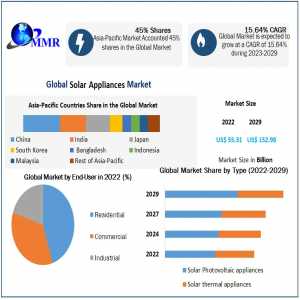
IT Staffing: Growth Themes In The New World

IT staffing is entering an exciting era. Worldwide IT spending is projected by Gartner to experience 9.5% growth in 2024, nearly three times the expected growth in real GDP, to reach a market size of $3.7 trillion dollars. Between 2023 and 2033, the United States Bureau of Labor Statistics (BLS) projects computer and mathematical occupations to grow at a lighting speed of 11.7% compared to the average of 4.0% across all occupations.
Staffing Industry Analysts (SIA) Senior Research Analyst Curtis Starkey explores this global growth outlook for the IT staffing market from a wide range of perspectives in his research report, IT Staffing: Growth Themes in the New World. This will certainly be a market to watch, with some fascinating metrics already coming into view.
“The labor market has relaxed after an uncharacteristically constricted post-COVID period,” Starkey said. “The IT unemployment rate is up from historical lows. Layoffs appear to be down from post-COVID highs. Bill rates have stabilized, meaning growth in the near future will need to come from new orders. And IT staffing recruiting difficulty has come down significantly, while IT staffing sales difficulty has jumped – further signaling a loosening of the tight labor market.”
Several themes emerge from this labor market loosening with notable implications in key IT focus areas as well as global markets.
IT – The Universal Disruptor
The information technology sector continually proves to be a key source of innovation and disruption in the staffing industry and beyond. Cloud technologies, cybersecurity and AI are leading factors in that IT disruption.
Cloud technologies remain in a high-growth phase as evident by market data and top market players. Gartner estimates total worldwide public cloud services revenue will surpass $800 billion in 2025, representing two-year growth of 47%, with Cloud System Infrastructure Services expected to have the highest growth over that period at 62%.
Accounting for 62% of the cloud infrastructure market, Amazon Web Services (AWS) and Microsoft Azure currently dominate the market. However, Google Cloud and Alibaba Cloud are gaining share and significant prospects.
Cybersecurity emerged as a top area of 2024 investment expected in a Gartner CIO survey, which is not surprising given current trends and headlines. Yet, as of Q4 2024, Cyberseek found the existing supply of US cybersecurity workers would fill only 83% of cybersecurity jobs. This is further complicated by the 21% longer time-to-fill for cybersecurity roles versus other roles.
“The focus on cybersecurity coincides with an increase in security attacks in recent years,” Starkey said. “Distributed Denial of Service attacks have become more complex in their motivations as well as methods employed. Such attacks need to be mitigated, fueling demand for high-skilled cyber/information security experts now that will continue in coming years.”
Artificial intelligence continues its meteoric rise in prominence. After a 2022 jump then 2023 decrease in share of jobs mentioning AI on Indeed, the share was up in September 2024 – reaching its highest level since December 2022 at 2.23% – and job postings mentioning generative AI has soared.
“While still a small amount of total job postings (0.19% most recently), the value was 0 until the beginning of 2023, as ChatGPT and other generative AI tools brought generative AI into the spotlight,” Starkey said. “Strong demand for AI and clearer, more defined use cases for AI could lead to further increases in this share in coming years.”
Growth Beyond the US
Although Starkey’s report discusses the United States in the most detail, he does identify IT staffing market growth on a more global level.
“IT staffing plays an important role outside of the US, with notable growth coming from the UK, APAC, and Latin America,” Starkey said.
The United Kingdom (UK) boasts Europe’s largest IT staffing market. CompTIA shows the UK IT workforce had 1.3 million workers in 2023, and expects 1.5% growth for 2024. The UK Department of Education expects IT employment to increase 16.3% from 2020 to 2035. SIA’s Most Attractive Staffing Segments in the UK report found that IT was the second most attractive segment and grew a median 12.6% annually over the last five years, the highest of any segment.
Moving to the Asia Pacific (APAC) region, India’s Ministry of Electronics & Information Technology expects the country’s IT/Business Process Management industry (excluding e-commerce) to reach $254 billion in the 2023-2024 timespan. Additionally, the IT/Software sector’s 2024 employment is expected to show a 1.1% increase.
In Australia, employment for Software and Applications Programmers has increased since 2018 by a cumulative 83.6%. Tech Council of Australia says the country had 935,000 tech jobs as of May 2023 and projects 1.2 million such jobs by 2030.
IT employment in Japan has grown by 47.4% since 2018 and a dwindling labor force could have further implications.
“Japan is dealing with a population crisis in which labor demand is expected to outpace labor supply by 10 million workers in 2040, according to Recruit data,” Starkey said. “This workforce shrinkage could lead to increased demand for high-skilled IT workers, more automation (which could increase demand for IT professionals), reskilling, and more reliance on foreign IT talent.”
Another area to watch is Latin America, an attractive area due to its relatively low average wages and real estate costs. CBRE ranked Mexico City, Mexico as the top Latin American tech market in 2024, followed by Sao Paulo and Santiago. The total tech talent employment growth of the 11 markets featured in CBRE’s rankings is a staggering 54% over the last five years, including 125% growth in Monterrey, Mexico and 88% in Mexico City.
Onward and Upward
A new IT age is truly dawning, and savvy organizations are already building robust growth planning strategies to thrive in this brave new world.
“While IT spending has slowed for the moment, the sector is arguably more important than ever,” Starkey said. “Companies need to upgrade their systems and software, analyze large data sets, and fight against increasingly sophisticated cyberattacks. Further, with the demand for more advanced AI tools throughout the workforce ecosystem, and the reliance on the cloud for some or even all parts of an organization’s operations, there are plenty of areas in which one could imagine utilizing IT staffing talent in coming years.”
Author Bio
Article Comments
No Comments!
At present there are zero comments on this article.
Why not be the first to make a comment?
Similar Articles
Search Pages
User Upgrade
account to full use of editor,
Including hyperlinks
Article Categories
There are zero sub-categories in this parent category.
There are zero sub-categories in this parent category.

















